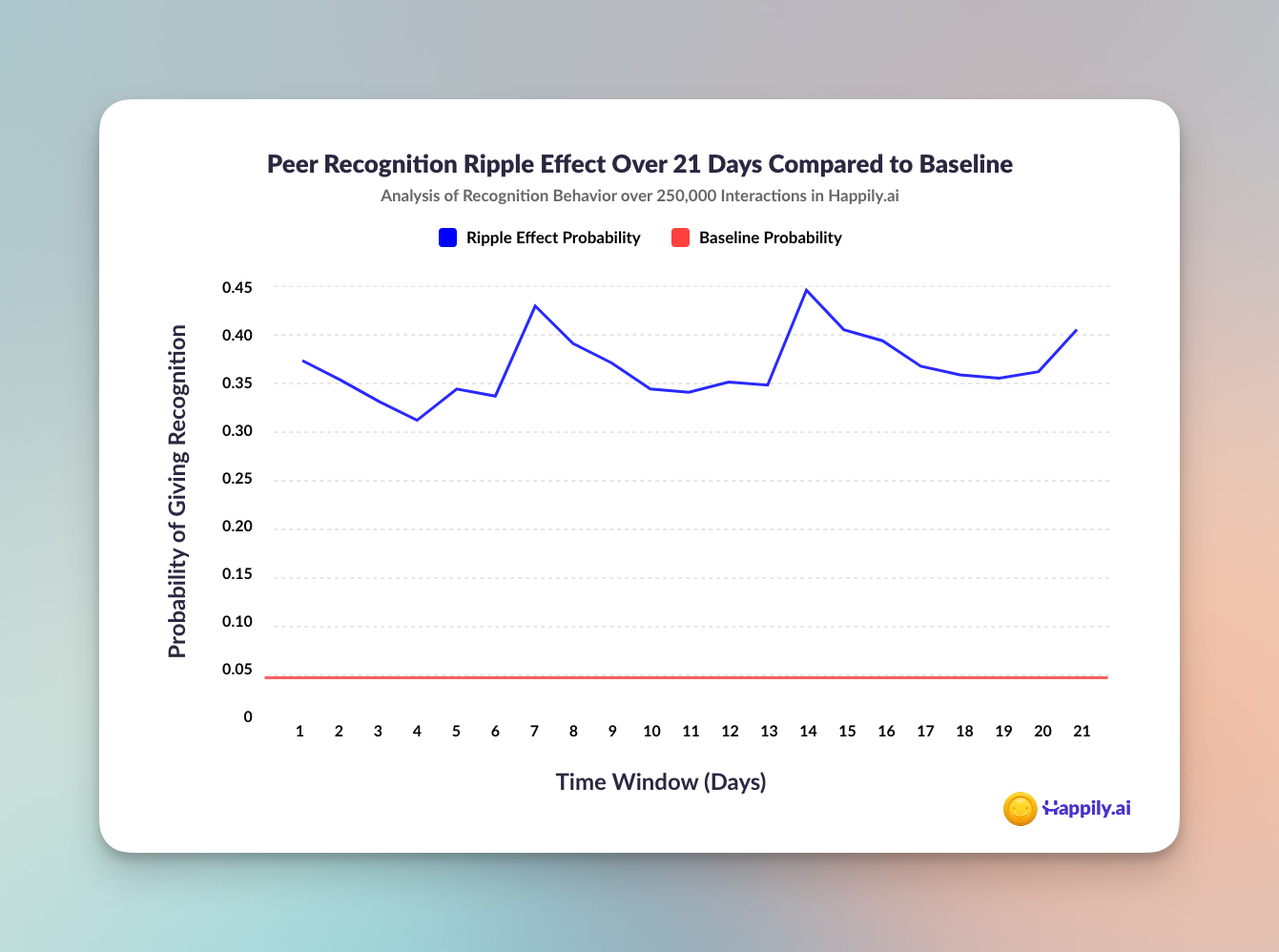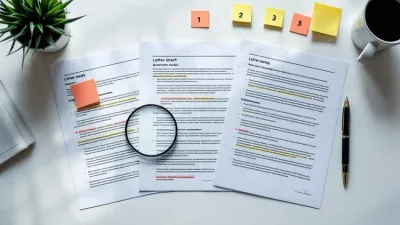Unveiling the Science Behind a 30x Boost in Workplace Appreciation
Introduction
A single act of peer recognition can increase the likelihood of an employee recognizing others by over 750% within 24 hours. This 'ripple effect' of appreciation, sustained for at least 21 days, has profound implications for workplace culture and productivity. Our latest research uncovers how small acts of appreciation create a sustained wave of positive behavior across teams, and how structured pauses between recognition opportunities - 'cooldown periods' - play a pivotal role in amplifying and resurrecting this effect over time.
The Ripple Effect: Quantifying the Impact

Our analysis of over 250,000 recognition interactions reveals:
- Baseline vs. Ripple Effect: The baseline probability of an employee giving recognition is 4.89%. However, this surges to 37% within a day of receiving recognition themselves.
- Sustained Impact and Resurgence: This heightened propensity to recognize others persists for at least three weeks, with notable peaks around the 7th, 14th, and 21st days. These peaks align directly with the end of cooldown periods, demonstrating how these intervals drive cyclical resurgences in recognition activity.
- Informal vs. Formal Recognition: The ripple effect is more pronounced for informal recognition—those not tagged with core value hashtags—suggesting that spontaneous acts of appreciation may be more contagious than their formal counterparts.
The Power of Cooldown Periods
Cooldown periods, far from being mere restrictions, serve as powerful mechanics for sustaining and revitalizing the ripple effect:
- Creating Anticipation: As the cooldown period nears its end, employees anticipate the opportunity to give recognition, leading to a surge in activity when the cooldown lifts.
- Rhythmic Resurgence: The 7-day interval between peaks suggests that weekly cooldowns create a natural rhythm of recognition, aligning with typical work cycles.
- Preventing Fatigue: By preventing constant recognition, cooldowns ensure that each act remains meaningful, avoiding potential burnout or devaluation of the practice.
The Role of Informal Recognition
Our research highlights the critical role of informal, spontaneous recognition:
- Stronger Ripple Effect: Informal recognition often leads to a more immediate and potent ripple effect, likely due to its perceived authenticity and personal touch.
- Balancing Structure and Spontaneity: While formal, value-aligned recognition programs are important, the power of informal recognition suggests a need for both structured and spontaneous appreciation channels.
- Measuring Organizational Values: By making core value tagging optional rather than mandatory, we can effectively measure the natural alignment of recognition with organizational values. This provides valuable insights into how deeply these values are embedded in day-to-day interactions.
- Authentic Value Expression: Optional tagging allows employees to express appreciation in ways that feel most natural to them, potentially leading to more genuine interactions.
Actionable Strategies for Leaders
To harness the ripple effect of peer recognition:
- Optimize Cooldown Periods: Fine-tune the frequency of recognition opportunities to create rhythmic surges in engagement. Consider aligning with natural work cycles, such as weekly or project-based intervals.
- Encourage Informal Recognition: Promote spontaneous appreciation alongside structured programs. Create channels that facilitate quick, easy forms of recognition to maximize the immediate ripple effect.
- Balance Formal and Informal Programs: Develop a recognition ecosystem that includes both value-aligned, formal recognition and spontaneous, informal appreciation.
- Leverage Data Analytics: Continuously monitor recognition patterns, including the ratio of formal to informal recognition and the alignment with core values. Use these insights to refine your approach and assess organizational culture.
Conclusion
The ripple effect of peer recognition, amplified by strategic cooldown periods and a balance of formal and informal appreciation, offers a powerful lever for enhancing employee engagement and organizational culture. By understanding and harnessing this effect, leaders can create a self-sustaining cycle of appreciation that transforms workplace dynamics. The key lies in orchestrating a recognition strategy that respects natural work rhythms, encourages spontaneity, and provides meaningful data on organizational values and culture.









